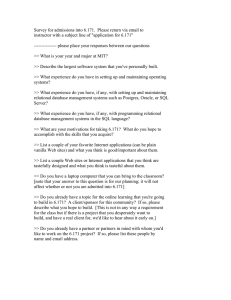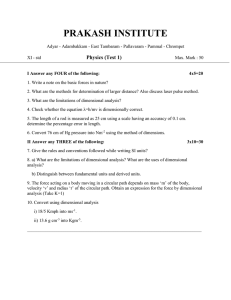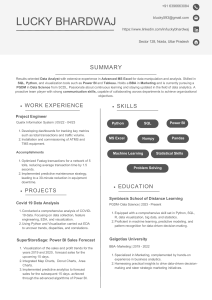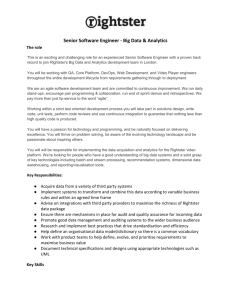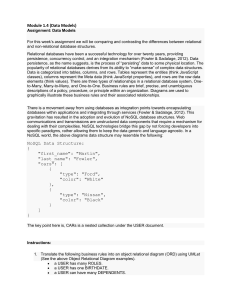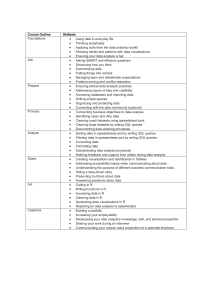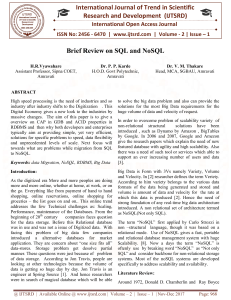click here for the study guide
advertisement
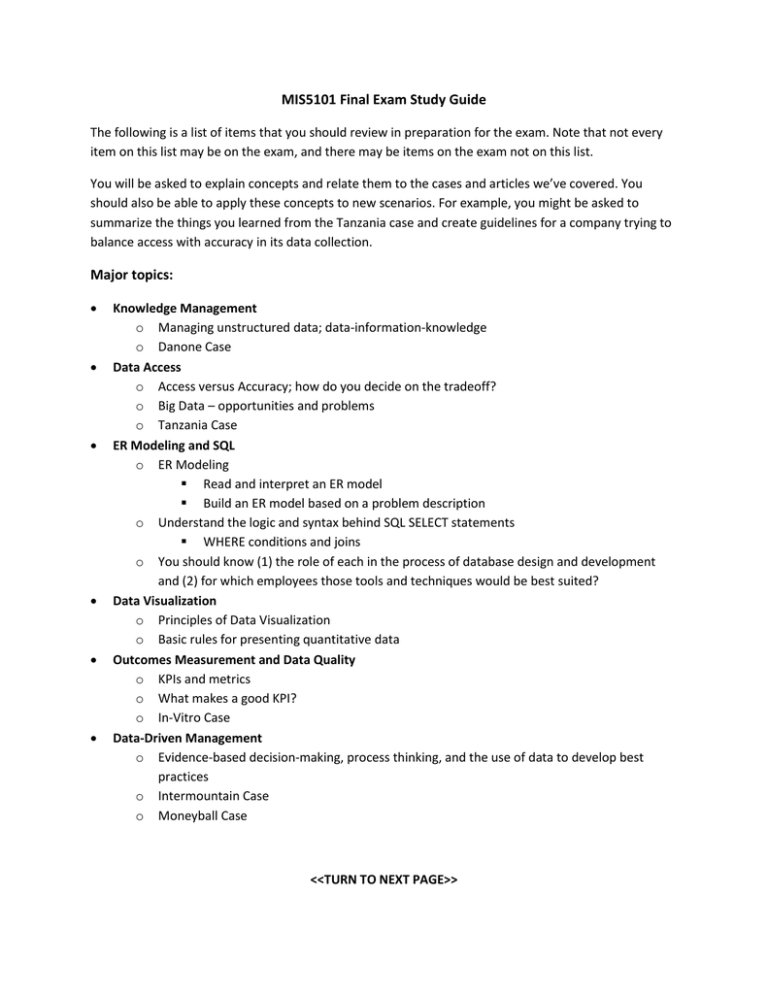
MIS5101 Final Exam Study Guide The following is a list of items that you should review in preparation for the exam. Note that not every item on this list may be on the exam, and there may be items on the exam not on this list. You will be asked to explain concepts and relate them to the cases and articles we’ve covered. You should also be able to apply these concepts to new scenarios. For example, you might be asked to summarize the things you learned from the Tanzania case and create guidelines for a company trying to balance access with accuracy in its data collection. Major topics: Knowledge Management o Managing unstructured data; data-information-knowledge o Danone Case Data Access o Access versus Accuracy; how do you decide on the tradeoff? o Big Data – opportunities and problems o Tanzania Case ER Modeling and SQL o ER Modeling Read and interpret an ER model Build an ER model based on a problem description o Understand the logic and syntax behind SQL SELECT statements WHERE conditions and joins o You should know (1) the role of each in the process of database design and development and (2) for which employees those tools and techniques would be best suited? Data Visualization o Principles of Data Visualization o Basic rules for presenting quantitative data Outcomes Measurement and Data Quality o KPIs and metrics o What makes a good KPI? o In-Vitro Case Data-Driven Management o Evidence-based decision-making, process thinking, and the use of data to develop best practices o Intermountain Case o Moneyball Case <<TURN TO NEXT PAGE>> Business Intelligence and Data Analytics o The use of data to develop business insights Pitfalls of overuse (ie., Matchmaking with Math) o Wholesale versus retail data o Data.gov Case Dimensional Modeling o How dimensional databases differ from relational databases (in structure and purpose) o How data moves from the transaction database to the cube The rise of NoSQL and relational alternatives o How dimensional data is analyzed; why it facilitates analysis You will NOT be asked to build a pivot table. o Netflix Case Data Integration o The ETL process and why it’s tricky o Using metadata to integrate data across multiple sources Digital Information Goods o What’s different about information goods? o How do you construct a business model around information goods? o The Cheezburger Network Case Information Privacy o Privacy versus Access o deCode Genetics Case o Dark Side of Consumer Analytics Case (article)
